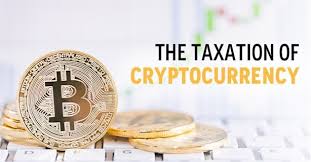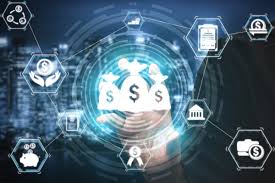NFTs: Beyond Art – Real-World Applications and Future Potential

Introduction
Over the past few years, the term nft (non-fungible tokens) has become one of the most discussed concepts in the world of digital assets. First, the NFT were primarily associated with digital art and collectibles—people buying images, GIFs, or even music that could be digitally owned. While many believed the NFT was just a passing phenomenon or a way to sell “JPEG,” the technology behind them is much deeper and more powerful.
NFTs are not just about digital art . They have the potential to transform multiple industries, including real estate, gaming, healthcare, identity verification, and even supply chain management. Just like how the internet changed the way we communicate and do business, NFTs can redefine how we prove ownership, transfer assets, and build trust in the digital age .
This article explores how NFTs are moving beyond art, their real-world applications, and what their future potential looks like.
What exactly are Nfts?
Before diving into applications, let’s quickly understand what NFT is all about:
The NFT stands for non-fungible tokens.
“Non-fungible” means that it is unique and cannot be replaced by anything else. For example, a بل 10 bill is fungible because it can be exchanged for another 1 10. But the concert ticket with your set number is unfungable-it is unique to you.
NFTs are stored on blockchain technology, which makes them safe, transparent and easy to verify.
So, simply put, NFT is a digital certificate of ownership that proves that you have a unique asset, be it a piece of art, a music track, or even a piece of land in a virtual or real world.
Early days: NFTS in digital art
NFTS first became popular through digital art and collecting. Platforms such as open sea, rare, and foundation allowed artists to sell their work directly to buyers without the need for galleries or intermediaries. Some popular examples include::
Beeple’s “every day: the first 5,000 days,” which sold for 6 69 million.
CryptoPunks and bored monkey Yacht Club, which became status symbols in the crypto community.
These early NFT projects showed the world that people are willing to spend real money on digital ownership, but they were just the beginning.
Beyond art NFTs: real-world applications
Now, let’s explore how NFTs are expanding into different industries and changing the way we think about ownership, identity and value .
1. NFTs in gaming
Gaming is one of the industries most affected by NFTs. In traditional games, players spend money on skins, weapons or upgrades, but they don’t actually own them. Items belong to the game company, and if the servers shut down, the players lose everything.
With NFTs:
In-game assets (such as skins, weapons, or land) may be owned as NFTs.
Players can buy, sell or trade items in markets .
Games such as Axie Infinity, Decentraland, and Sandbox already allow players to earn real money from gaming.
This concept is called ” play-to-earn (P2E)”, where gaming becomes not only a source of entertainment, but also a source of income.
2. NFTS in real estate
NFT are entering both virtual and real world real estate.
In Metaverse (virtual worlds such as decentralization or sandboxes), land parcels are sold as NFTs, and people build businesses, shops, or even hold events on them.
In the real world, nfts can be used to represent property ownership. Instead of dealing with piles of paperwork, ownership records can be stored on the blockchain as NFT, making it easier to transfer them safely.
It will remove fraud, reduce costs, and speed up transactions in real estate.
3. NFTS in identity and credentials
Another powerful use case of NFTS is in digital identity verification .
Imagine an education certificate secured as an NFTS on your passport, driver’s license, or blockchain .
This will make them proof of tampering, easy to verify and portable in countries and institutions.
Universities can issue NFT-based degrees, which can be verified immediately without the risk of fraudulent documents to employers .
This could solve important issues related to identity theft and fraudulent credentials.
4. NFTS in health care
Healthcare systems often face problems with data security and ownership. Patient medical records are scattered across hospitals, making it difficult to track and protect sensitive information.
With NFTs:
Medical records can be stored as NFTs, accessible only to patients and authorized physicians.
Can control patients who see their health data, ensuring confidentiality.
Medical research data can be tracked through the NFT, ensuring authenticity and reducing fraud.
5. NFTS in supply chain management
One of the biggest global challenges is tracking products across supply chains to ensure they are authentic . Counterfeit goods, especially pharmaceutical and luxury items, cost billions every year .
Can help by the NFTs:
Representing each product as a unique NFT.
Tracking his journey from manufacturing to customer .
Proving the authenticity of luxury goods, food products and medicines .
For example, a diamond could come with an NFT that proves it was ethically mined and not illegally acquired.
6. NFTS in music and entertainment
NFT are giving musicians and entertainers new ways to connect with fans and earn income.
Artists can release music albums as NFT, ensuring they receive royalties whenever the song is resold .
Fans can purchase special concert tickets or backstage passes as nfts.
Musicians such as kings of Leon and Snoop Dogg have already released NFT-based music albums.
This eliminates the need for intermediaries such as record labels and gives artists direct income and ownership.
7. NFTS in education
Education can also change with the NFTs:
Completion of certificates, diplomas, and online courses can be reserved as NFTs.
Students can take their entire academic history to a digital NFT wallet .
Schools and universities may issue NFTs that cannot be forged or altered.
It can prevent fraudulent degree scams and facilitate global verification.
8. NFT in charity and fundraising
The NFT is also being used for the social good. Organizations are creating NFT collections and using sales to raise money for charitable causes.
For example:
An artist can sell an NFT collection, and all proceeds go to a charity.
Donors receive an NFT as evidence of their contributions, which may be a badge of Honor .
This not only raises funds, but also increases transparency, as blockchain records show where the money went.
Benefits of NFTs in the real world
The adoption of the NFT beyond art brings a number of important benefits:
Transparency-everything is recorded on the blockchain.
Security-NFTs cannot be easily forged or replaced.
Proof of ownership – clear proof of Who Owns Who.
Global access-NFTs can be traded anywhere in the world.
Performance-reduces paperwork and intermediaries.
The challenges and risks of the Nfts
Despite their potential, the NFT also faces challenges:
Environmental impacts-some blockchains (such as Ethereum before ETH 2.0) consume more energy.
Regulatory issues-governments are still figuring out how to regulate the NFT.
Market volatility-NFT values can rise and fall very quickly.
Scams and scams – fake NFT and carpet pulling (where creators disappear with money) are common.
Access-many still do not fully understand NFTs.
For the NFT to reach their full potential, these issues need to be addressed.
The future potential of the Nfts
Looking ahead The NFTs could redefine many aspects of our lives:
Every physical asset can have a digital NFT twin from cars to homes .
Digital identity can be based on NFT, making fraud almost impossible .
Governments can issue NFT for national documents such as passports.
Health care can be safer and more transparent with NFT-based medical records .
Entertainment will continue to evolve, creating strong relationships between NFT creators and fans.
In the future, NFTs can become so common that people use them daily without realizing it—just like we use the internet today.
Result
NFTS started digital art as a way to sell and own it, but they are expanding rapidly into real-world industries with enormous potential . From gaming and real estate to healthcare and supply chains, NFTs are proving they’re more than just a trend.
While the challenges remain, the idea of a unique, verified digital ownership system is here to stay. In the coming years, NFT can play a central role in owning, trading and protecting assets in both the digital and physical worlds .







